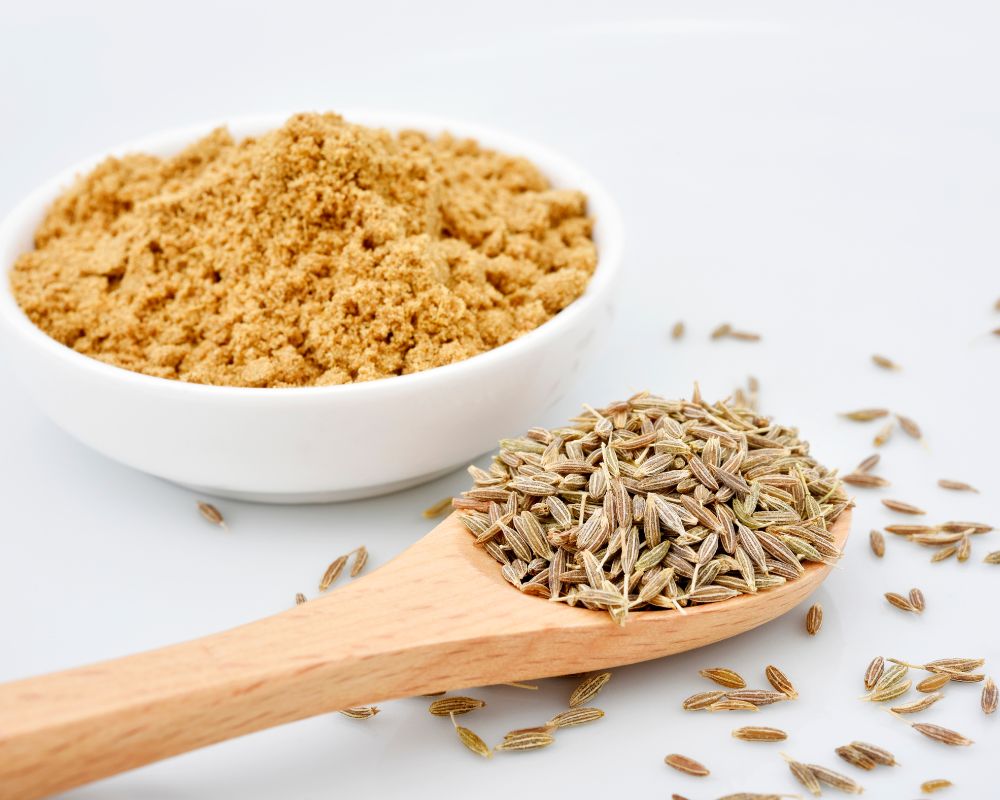There are 4 different spicy seasonings people add their dishes to improve flavor. These are hot, aromatic, herbs, and mild. The spicy hot ones include chili peppers, black pepper, or ginger, which contain capsaicin, piperine, or gingerol.
Table of Contents
4 types of spicy
One of the main classifications of spices sorts them into 4 categories based on their flavor profile. Besides the “hot” spicy flavors, there are aromatic, mild, and herbaceous types of spicy. Some of the examples include, but are not limited to:
- Hot: various chiles, ginger, hot paprika
- Aromatic: nutmeg, dill, fennel, clove
- Mild: paprika, lemon powder, various types of sea salts
- Herbaceous: basil, thyme, rosemary
How many different types of “hot” spicy are there?
It’s important to note that tasting food is a subjective experience. People may have different perceptions and thresholds for what they consider “spicy hot.” However, these 6 chemical compounds are associated with the spicy or hot sensation in foods:
- Capsaicin: This is the compound responsible for the heat in chili peppers (a Scoville scale). It stimulates the pain receptors in your mouth and throat, creating a burning sensation and numbing your taste buds.
- Allyl isothiocyanate: This ingredient is present in mustard seeds, radish, horseradish, and wasabi. It’s responsible for the sharp, spicy flavor that can make your sinuses feel like they’re on fire.
- Piperine: This is the compound that gives black pepper its spicy flavor. It’s not as intense as capsaicin but can still create a warming sensation in your mouth.
- Allicin: This is found in onions and garlic and is responsible for the pungent, spicy flavor. It’s often described as a “bite” or a “sting” and can be intense.
- Gingerol: This is the compound that gives ginger its spicy flavor. It’s often used in cooking and can create a warming sensation in your mouth and throat.
- Cinnamaldehyde: This is found in cinnamon or star anise and is responsible for the sweet and spicy flavor. It can create a warming sensation in your mouth and is often used in baked goods.
What are the most common spices?







Some of the usual spices are:
| Black pepper/peppercorns | This versatile spice can be used in many dishes and adds a subtle, spicy kick |
| Garlic | This pungent ingredient can add depth and flavor to many dishes and is a staple in many cuisines worldwide |
| Paprika | Paprika is a spice made from ground sweet or hot peppers, and it’s often used in dishes to add color and flavor. It has a slightly sweet and smoky taste that can add depth to soups, stews, and sauces |
| Cinnamon | A warm, sweet, and woody flavor often used in baking and desserts |
| Onion powder | Savory and slightly sweet, used to add depth of flavor to soups, stews, and sauces and as a seasoning for roasted meats and vegetables |
| Cumin | A nutty and slightly bitter flavor often used in Mexican, Indian, and Middle Eastern cuisines |
| Ginger | A spicy and slightly sweet flavor often used in Asian and Indian cuisines for both sweet and savory dishes. |
Top 15 spices you should have in your kitchen















If you are looking to include more spicy flavors in your meals, check out these 15 spices:
| Cardamom | Warm, slightly sweet, and spicy, commonly used in Indian and Middle Eastern cuisine to flavor chai tea, biryanis, curries, and baked goods |
| Coriander seeds | Citrusy, slightly sweet, and floral, used in Mexican, Indian, and Middle Eastern cuisine to flavor curries, salsas, and roasted meats |
| Nutmeg | Warm, sweet, and slightly nutty, used in sweet and savory dishes, such as pies, custards, cream sauces, and roasted meats |
| Turmeric | Earthy, slightly bitter, and pungent, often used in Indian and Southeast Asian cuisine to add color and flavor to curries, rice dishes, and stews |
| Anise | Sweet, licorice-like flavor, commonly used to flavor baked goods, soups, stews, and drinks like absinthe and ouzo |
| Allspice | Warm, sweet, and slightly spicy, used in Caribbean, Middle Eastern, and North African cuisine to flavor jerk seasoning, curries, and baked goods |
| Chili pepper | Spicy, used in various cuisines, including Mexican, Indian, and Thai, adds heat and flavor to soups, stews, curries, and sauces |
| Cayenne pepper | A chili pepper that is usually dried and ground into a powder with a hot and spicy flavor and is common in dishes like chili, stews, and sauces |
| Hot sauce | A condiment made from chili peppers, vinegar, and other spices used to add heat and flavor to dishes; you can use it in marinades, dressings, and dips |
| Jalapeno pepper | Fresh or pickles pepper commonly used in Mexican cuisine. It has mild to medium heat and a slightly sweet, earthy flavor that works great in salsas, guacamole, and chili |
| Fenugreek | A slightly bitter, nutty flavor that is perfect in Indian, Middle Eastern, and African cuisine and is often used in spice blends, curries, and pickles |
| Fennel seeds | Have a sweet, licorice-like flavor used in Mediterranean cuisine to flavor sausage, soup, and bread, and can also be used in spice blends and teas |
| Lemongrass | A lemony flavor and fragrance that perfectly complements soups, curries, and marinades and can also be used in teas and cocktails |
| Cilantro | A herb with a fresh, citrusy flavor typically used in Mexican, Thai, and Indian cuisine to flavor salsas, curries, and soups |
| Curry powder | A spice blend that typically includes cumin, coriander, turmeric, and other spices. It has a warm, earthy flavor and is common in Indian and Southeast Asian cuisine to flavor curries, rice dishes, and soups |

